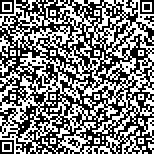| 引用本文: | 宋金明,张 默,李学刚,袁华茂,李 宁,段丽琴,许思思.胶州湾滨海湿地中的 Li、Rb、Cs、Sr、Ba 及碱蓬(Suaeda salsa)对其的“重力分馏”.海洋与湖沼,2011,42(5):670-675. |
| |
|
| |
|
|
| 本文已被:浏览 2630次 下载 2436次 |

码上扫一扫! |
|
|
| 胶州湾滨海湿地中的 Li、Rb、Cs、Sr、Ba 及碱蓬(Suaeda salsa)对其的“重力分馏” |
|
宋金明1, 张 默1,2, 李学刚1, 袁华茂1, 李 宁1, 段丽琴1,2, 许思思1,2
|
|
1.中国科学院海洋研究所海洋生态与环境科学重点实验室;2.中国科学院研究生院
|
|
| 摘要: |
| 通过对胶州湾东北部滨海湿地 5 个站点盐渍土壤和其上生长的碱蓬中的微量碱金属、碱土金属 Li、Rb、 Cs、 Sr、Ba 的系统研究, 发现盐渍土壤中 Li、 Sr 和 Ba 的含量高于我国土壤背景值, Rb、Cs的含量特别是Cs的含量低于我国土壤的背景含量, 盐渍土壤中Li/Cs比值和Ba/Sr比值较为接近, 并且 Li 和 Cs、Sr 和 Ba 之间具有显著的正相关关系, 表明这一区域的盐渍土壤有相似的成土母质。碱蓬对碱土金属的积累量明显高于碱金属, 但对它们的富集系数都小于 1, 碱蓬生物富集系数 Sr > Li > Rb > Cs > Ba, 碱蓬对这五种元素从盐渍土壤中迁出的能力随着它们原子序数的增加明显降低, 即越重的元素越不易被迁离地面移出盐渍土壤, 相反, 越轻的元素越易被迁离地面移出盐渍土壤, 碱蓬可造成盐渍土壤 Li、Rb、Sr、Cs、Ba 明显的“重力分馏” 。 |
| 关键词: 微量碱金属与碱土金属, 盐渍土壤, 碱蓬, 重力分馏 |
| DOI:10.11693/hyhz201105007007 |
| 分类号: |
| 基金项目:国家海洋公益性项目资助, 201205008 号; 国家自然科学基金委员会创新群体项目资助, 41121064 号。 |
附件 |
|
| Li, Rb, Cs, Sr, Ba, AND THEIR GRAVITY FRACTIONATION IN SALINE SOILS AND SUAEDA SALSA IN THE NORTHEASTERN COASTAL WETLAND OF THE JIAOZHOU BAY |
|
SONG Jin-Ming1, ZHANG Mo1,2, LI Xue-Gang1, YUAN Hua-Mao1, LI Ning1, DUAN Li-Qin1,2, XU Si-Si1,2
|
|
1.Key Laboratory of Marine Ecology and Environmental Sciences, Institute of Oceanology, Chinese Academy of Sciences;2.Graduate University of Chinese Academy of Sciences
|
| Abstract: |
| In this paper, we report the distributions of alkali metals (Li, Rb, and Cs) and alkaline-earth metals (Sr and Ba) in saline soils and Suaeda salsa and the accumulation characteristics of these elements in S. salsa from the northeastern coastal wetland of the Jiaozhou Bay. The variations in both the alkali metal and alkaline-earth metal concentrations were relatively small. Among these metals, the concentrations of Li, Sr, and Ba were higher than the background values of China’s soils, whereas the concentrations of Rb and Cs, especially that of Cs, were lower than the background values. Li/Cs ratio was close to Ba/Sr ratio. Moreover, there were significant positive correlations between Li and Cs and between Sr and Ba, suggesting that the soils in this area mainly came from weathering of minerals that had high potassium content (e.g., potash feldspar), which was coincident with the parent materials (i.e., granite) widely distributed in the Qingdao area. Although the accumulation of alkaline-earth metals by S. salsa was more than that of alkali metals, all enrichment factors (EFs) were less than one, suggesting that S. salsa posed no accumulative ability for either alkali metals or alkaline-earth metals. The order of EFs was: Sr > Li > Rb > Cs > Ba, and the EFs in aboveground tissues of S. salsa were less than one, suggesting that S. salsa had no general characteristics of accumulation plants. Transfer efficiencies of Li, Rb, and Sr by S. salsa were large and most of them were transferred into the aboveground tissues, and Li accumulation was high in leaves. The accumulation of Cs and Ba by S. salsa was low and most of the accumulation was limited in roots. A new conclusion is that S. salsa may cause “gravity fractionation” of Li, Rb, Cs, Sr, and Ba, e.g. the larger the atomic number, the less of the migrated amount to the aboveground tissues in S. salsa. |
| Key words: Alkali metals and alkaline-earth metals, Saline soils, Suaeda salsa, Gravity fractionation |
|
|
|
|
|
